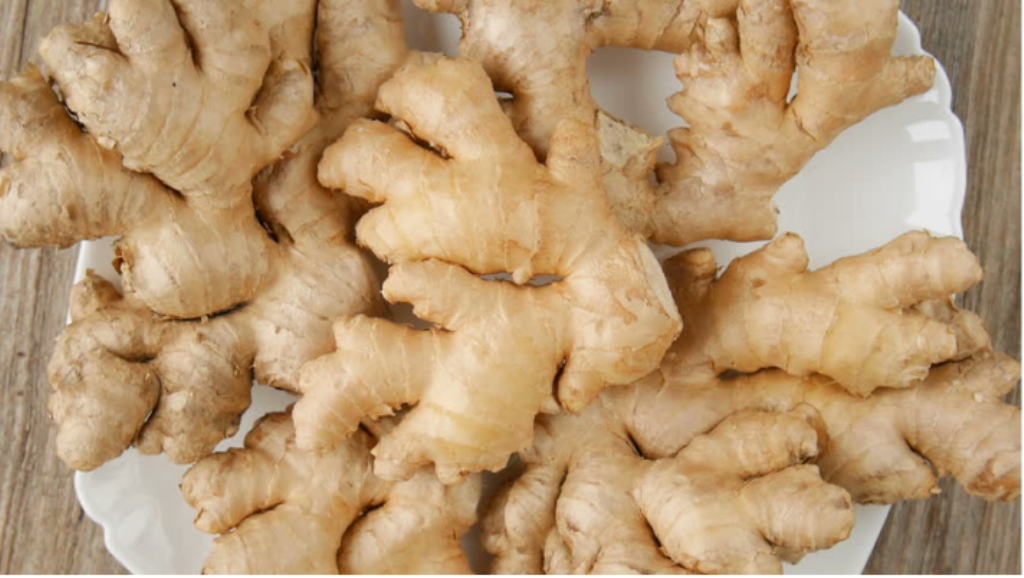
Ginger is a very popular spice and consumed globally. Demand for ginger had been growing since ages worldwide, whether it is used for providing palatable taste in the meals, as medicines, or in the cosmetics industry. Ginger can be used for a variety of food or medicine items such as vegetables, candy, soda, pickles, and alcoholic beverages. This spice has the ability to grow in a wide variety of land types and areas, although yields are most if cultivated in a warm, humid environment. Production should be carried at heights of 300 and 900 m from sea level. Soils should be well drained and at least 30 cm deep. Ginger requires a period of low rainfall before the cultivation, followed by well-distributed rainfall during the growth period.
Due to warm and humid climate during greater part of any year, ginger production is suited most for regions across southwest and Northeast India. However in recent years the Northern states have started producing more ginger than the southern India. Lower input costs in northern states are the major reason for farmers in these states to take up ginger cultivation. Higher labor cost and land leasing cost are other valid reasons in discouraging South Indian farmers of Kerala/Karnataka to produce ginger.
In fact ginger is among the earliest recorded spices to be grown and exported from southwest India. India holds fifth to seventh position in Global ginger export market, on an average. Our nation ranks number one in production globally. The traditional exports markets for India are Pakistan and Bangladesh, Saudi Arabia, the United Arab Emirates, Morocco, the United States, Yemen Republic, the United Kingdom, and the Netherlands. China is the largest exporter of ginger across world, exporting over 50%, followed by Netherlands, Thailand, Peru and India. On the other hand, world’s largest importer is the US, followed by Japan, Netherlands, Pakistan and Germany. More than 50% of total ginger production is contributed from states of North East, Uttarkhand and Sikkim. Most of ginger in North Eastern states is produced under organic conditions.
Top 10 ginger producing states of India are:
1. Assam
2. Maharashtra
3. West Bengal
4. Gujarat
5. Kerala
6. Meghalaya
7. Mizoram
8. Karnataka
9. Nagaland
10. Uttarkhand
Source: Mandi Contacts
Production Trends of Indian Ginger in last 10 Years
|
Year |
Production in Metric Tonnes |
|
2019 |
996041 |
|
2018 |
893242 |
|
2017 |
1070000 |
|
2016 |
1109000 |
|
2015 |
760000 |
|
2014 |
655000 |
|
2013 |
683000 |
|
2012 |
756000 |
|
2011 |
702000 |
|
2010 |
385330 |
Read More: Ginger Farming - How to Grow in the Containers (Pot)

Source: FAO
World’s Top Five Ginger Producers in 2019
|
Country |
Exports in Metric Tonnes |
|
India |
996,041 |
|
China |
552,192 |
|
Nigeria |
375,305 |
|
Nepal |
293,094 |
|
Indonesia |
228,707 |
Source: FAO
World’s Top Five Ginger Exporters in 2019
|
Country |
Exports in Metric Tonnes |
|
China |
476,065,915 |
|
Netherlands |
103,939,976 |
|
Thailand |
93,623,913 |
|
Peru |
47,146,843 |
|
India |
33,641,418 |
Source: FAO
Trade Prospects Quite Promising in Near Future
-
Ginger has been giving good returns since past 5-6 year therefore farmers had increased sowing area. As a result production is on the increasing trend, except for few years. Please refer to the price table given below for understanding the price trend. Recent years have observed consumers’ preference shifting towards herbal based products, in addition to growing usage in the Pharma industry. As a result demand growth is seen consistently. Increase in domestic demand has risen significantly in last few years hence exports have not grown much. Export potential is also increasing - It is mainly because of expansion of local demand that export pace has reduced in last couple of years. In 2018, average prices of ginger at major market of Cochin were near Rs 129/kgs while in the current year, prices are averaging near Rs265 a kg. Therefore farmers are able to get decent returns through ginger cultivation since last 2 years.
Average Ginger Prices at Cochin in Rs/Kg between 2015 and 2020
|
Year |
Price in Rs/Kg |
|
2015 |
274.55 |
|
2016 |
209.36 |
|
2017 |
160.33 |
|
2018 |
129.72 |
|
2019 |
184.3 |
|
2020 |
265 |
Source: Spices Board of India
Exports prospects are also brighter for India. If we speak about China and Thailand, they are India’s nearest export rivals. In 2019 output has been lower in these two nations, but till December 2019, exports failed to commence with a normal pace in both nations. China and Thailand normally start exporting ginger actively, during later part of every year. China’s production in 2019 was estimated to be lower by 33% versus 2018. So for the current year, India has a good opportunity to source the importing nations – subject to lockdown restrictions getting lifted completely. Russia and Middle East countries are good markets for India. Peru mainly exports organic ginger to these nations but the organic ginger is available at expensive rates. Hence overseas demand is unable to pick up there. Brazil is also a global supplier but it exports seasonally, therefore cannot export all round the year. This is not the case for India as it can supply ginger throughout the year. Therefore India’s export potential remains brighter in near future, in addition to domestic business prospects.















